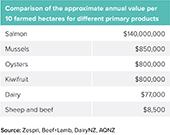Letter: District revitalisation plans needed

Contributed
by Catrina Jones
It was great to see on the Eastern Bay app on Friday, July 18, that regional development minister Shane Jones was in Murupara and Kaingaroa – heart of forestry country – to open a new community centre and new off-highway road to help revitalise the town.
Whakatāne needs to make plans to revitalise our whole district. Our district is rated 13/20 for deprivation.
We need to create new jobs in agriculture, aquaculture, horticulture and forestry.
I started work in 1972 at the Whakatāne Board Mills in the accounts department when there were 600 employees. Mill employment was the backbone of our district. Those were the days. The mill now employs 190 staff.
Technology has bought about changes.
In the early 1990s, the banking sector had customers who were opposed to ATMs and debit cards.
They would use cash and cheques and help tellers keep their jobs, however, we all know what has happened.
Change is inevitable. Growth is optional. Our district needs to plan ahead for our future generations.
We need to re-establish forestry in our district. We need to rethink our strategies and prioritise solutions that benefit our district.
The demand for lumber, forestry products, wood chips, pulp is not slowing down.
New Zealand needs to focus on the demand and implement sustainable harvesting of forestry ensuring regeneration, which can ensure we have a thriving economy.
The Government must stop exporting unprocessed logs to Korea, China and Japan. New Zealand yields only $0.27c per kilogram for exporting unprocessed logs.
We can benefit from the logs in New Zealand and all the byproducts, as well as employment.
Throughout New Zealand there are many closed sawmills. Kawerau sawmill could be re-established to process the logs.
New Zealand is suitable for short rotation forestry, which involves rapid rotation cycles of plantation trees, typically harvested in 12-18 years compared to 28-30 years.
New Zealand’s forestry value chain is already integrated and has become highly effective at producing large volumes of timber at increasingly rapid rates (Alan Jones – Crown Research Institute Scion).
Whakatāne needs to expand and we must concentrate on developing suitable land for housing and decide what type of housing will be built (timber) and then plan for all the infrastructure.
Dairy farming is struggling in New Zealand.
The dairy sector is now threatened by new proteins, which can do much more damage than meat protein substitutes.
Cells are taken from a cow, yeast added, put into a fermenter and then water and sugar added.
Proteins are harvested that could be used in ice-cream. This is called precision fermentation.
Diversification is a serious consideration for farming now, and many farms have already started implementing changes.
An award-winning scientist, Dr Lee Burbery, has developed a process using wood chips that act as a water filter in farming waterways, converting reactive nitrate nitrogen to innocuous nitrogen gas.
The chart above shows comparison values per 10 hectares. Dairy, sheep and beef are low returns.
A 10-hectare solar farm at Waiotahe could generate a return of $2,700,000 at 10c/kWh (27GWh annually).
Ōpōtiki’s new boat harbour is geared for land base aquaculture farms – hatcheries for paua, crayfish and scallops.
Whakatāne will have a good future if we plan, choose to diversify and be creative.
Once the first step is initiated it will open up other opportunities.
Whakatāne will thrive in this active, constantly changing environment.